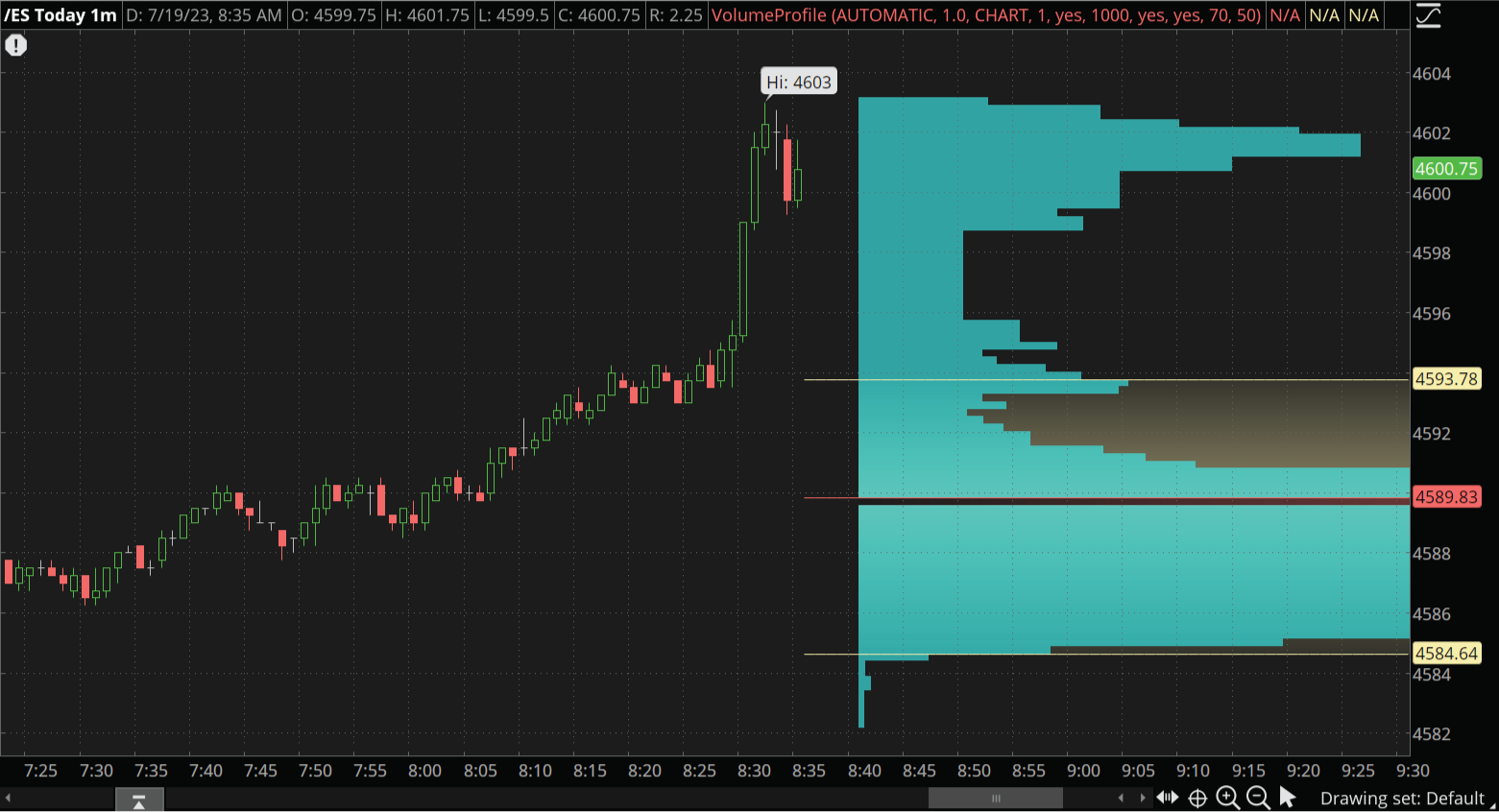
The Volume Profile indicator on the thinkorswim® platform displays volume traded at each price level, making it easy for traders to see what price a security traded at most often.
There are various ways to use the Volume Profile, but for this example, we'll discuss how traders can observe volume distributions and volume nodes using the Volume Profile study.
Volume distributions
In a typical trading session, volume tends to be normally distributed, meaning when volume is displayed as a profile on the same axis as price, the shape at the end of an average session frequently resembles a balanced bell curve (see chart below). Most volume occurs in the middle of this curve, while relatively little volume occurs in the upper and lower tails.
This seems remarkable because the shape of the Volume Profile during the session often changes fluidly. Sometimes, it resembles a "p" shape, where a lower tail exists but not an upper tail (yet). Sometimes, it resembles a "b" shape, where an upper tail exists but no lower tail (yet).
By spotting the shape of a Volume Profile during the session and estimating the price at which volume must occur to make it normally distributed, traders can estimate the direction of future price movement.
Volume profile overlay

Source: thinkorswim platform
For illustrative purposes only.
High and low volume nodes
Prices at which the highest and lowest volume occurs are also noteworthy. Volume indicates levels of acceptance (high volume) and rejection (low volume). When volume is high, the price is usually equally attractive to both buyers and sellers. At a price where fewer participants are willing to transact, volume must adjust quickly to find equilibrium.
Therefore, low volume occurs at extreme highs and lows when the price is too high for buyers or too low for sellers. High volume usually occurs in between extreme highs and lows at an equilibrium price.
Hypothetically, a trader might attempt buying at a low-volume node at a support level. This means an attempt at buying at a lower price than everyone else at the equilibrium price. Likewise, selling at a low-volume node at a resistance level means an attempt at selling at a higher price than everyone else at the equilibrium price.
With a general idea of how Volume Profile works, a trader can potentially make more effective strategy decisions.
Futures and futures options trading involves substantial risk and is not suitable for all investors. Please read the Risk Disclosure Statement for Futures and Options prior to trading futures products. Futures and forex accounts are not protected by the Securities Investor Protection Corporation (SIPC). Forex accounts do not receive a preference in any bankruptcy proceeding pursuant to Part 190 of the CFTC's regulations. Futures, futures options, and forex trading services provided by Charles Schwab Futures and Forex LLC. Trading privileges subject to review and approval. Not all clients will qualify. Forex accounts are not available to residents of Ohio or Arizona.
The information provided here is for general informational purposes only and should not be considered an individualized recommendation or personalized investment advice. The investment strategies mentioned here may not be suitable for everyone. Each investor needs to review an investment strategy for his or her own particular situation before making any investment decision.
All expressions of opinion are subject to change without notice in reaction to shifting market conditions. Data contained herein from third-party providers is obtained from what are considered reliable sources. However, its accuracy, completeness, or reliability cannot be guaranteed.
Examples provided are for illustrative purposes only and not intended to be reflective of results you can expect to achieve.
0923-34YE

